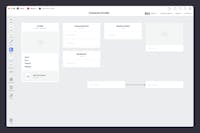
Creating a character profile is a great way to map out a fictional character's life. No matter whether you're a professional or a hobbyist writer, creating a profile is the best way to define your character's backstory, appearance, traits, goals and flaws. Everything you'll need to create an authentic, and relatable character that enriches your story.
Round-out your characters by giving them a detailed personality that stretches beyond the story itself. Some aspects of their personality won't make it into the story, but will help to inform the decisions they make as the story unfolds.
Once you've imagined your characters, you can map their relationships to understand them from a different perspective. To learn more, check out our guide to creating compelling characters.
This template is part of our guide on How to plan a novel.
Whether you’re writing a professional novelist or a hobby writer creating your first screenplay, follow this step-by-step guide to learn the modern process of creating believable and engaging characters in Milanote, a free tool used by top creatives.
The Character Profile template contains empty notes for your ideas and descriptions, plus placeholders for reference images, videos and links. Before you begin, think about the type of character you'd like to develop and how they fit into the story.

A character might start as a bundle of random ideas, traits and plot points from a story outline, so it’s important to bring everything together in one place. A character archetype can help narrow your focus. There are twelve common archetypes or personas that we recognize across literature, mythology, and the human experience:
Archetypes provide guidelines for behaviors, emotions, and actions that can help push a story. For example, the Explorer is naturally curious, restless, and driven to push boundaries, such as Detective Sherlock Holmes.
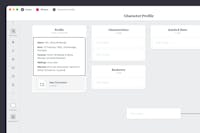
Once you've defined an initial archetype, you can begin to shape the character and make them original. Consider the emotional connection between your audience and your character, and work towards the desired outcome. You may find that switching the age and gender of a character can lead to very different responses from your reader.
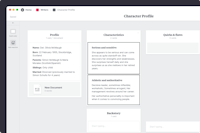
Consider the character's role in the story and the purpose they serve. Are they the protagonist, antagonist, or a supporting character? Knowing their role will guide you in choosing characteristics that align with their narrative function.
Your character's backstory describes the journey they have taken up to this point. It allows you to explore their fears, weaknesses, and motivations and to define their purpose. You can explain the character's methods and evaluations—why they act the way that they do, the choices they make, and how it drives the individual forward. Are they making progress towards their goal, or making things worse?
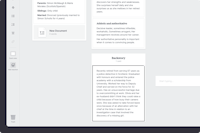
Your character should come from an authentic place. That means that the character probably has some contradictions that make them a little out of the ordinary. Are they quick-tempered and easily provoked, leading to frequent outbursts that strain relationships with others? Or are they overly self-critical, constantly doubting their abilities and feeling inadequate compared to others? If a character is too simplistic, it can feel cliched.
Incorporating quirks, faults, and flaws into your character profiles can create more well-rounded and relatable individuals, making them feel human and allowing readers to connect with their struggles and growth throughout the story
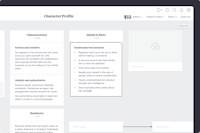
A believable character grows and changes as your story evolves. Just like real people, they adapt and respond to life's events.
Consider where your character starts in the story and how they change. Character arcs help convey growth and development making your story even more believable.
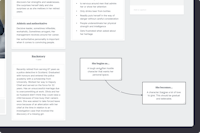
Even if you're writing a novel, visual references and inspiration can help bring your character to life. There are lots of fantastic sites where you can find great visual inspiration for free, like Pinterest or Google Images.
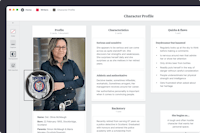
Click the "Upload file" button or just drag a file onto your board. You can add images, logos, documents, videos, audio and much more.
Now that you've created a unique fictional character, you have a great reference to use while writing your story. Use this template below to start inventing your next amazing character.
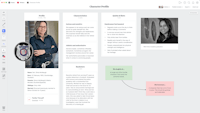
Bring your characters to life.
Sign up for free with no time limit
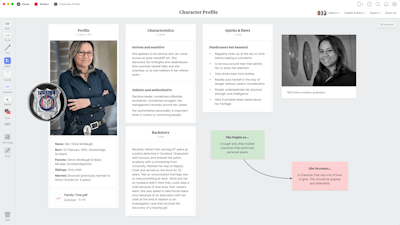
Milanote is where creative professionals organize their most important work.
Free with no time limit